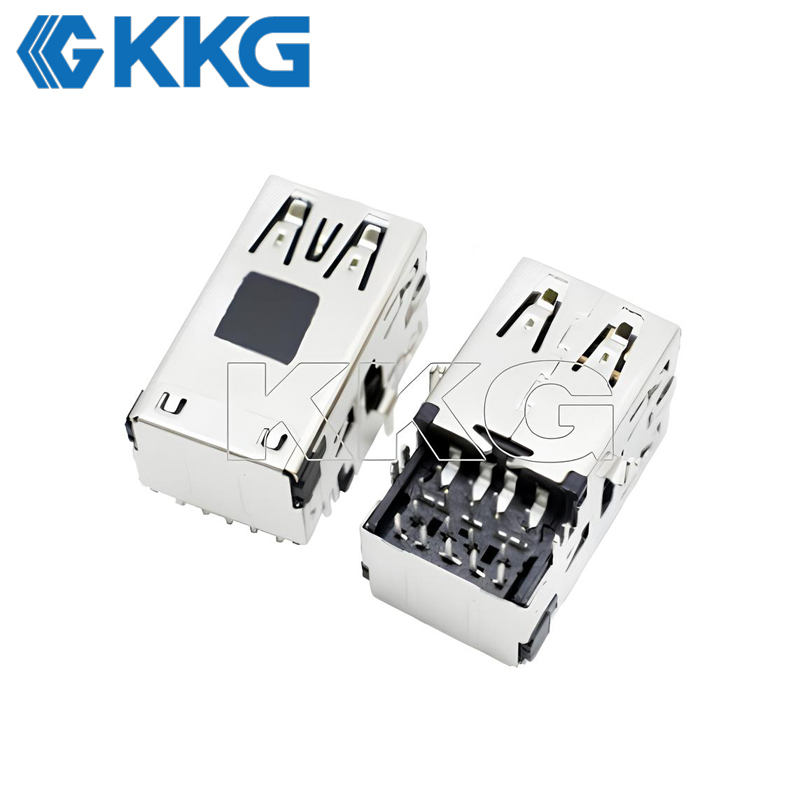Understanding the Differences Between USB 3.0 DIP and SMT CONNECTORs
As the demand for high-speed data transmission continues to grow, USB 3.0 technology has become a standard interface in a wide range of electronic devices. Offering data transfer rates of up to 5 Gbps, USB 3.0 supports everything from consumer gadgets to industrial control systems. When designing a PCB or selecting a connector for your application, the decision between a USB 3.0 DIP Connector and a surface-mounted alternative plays a critical role in the product’s performance, durability, and manufacturability.

This article explores the fundamental differences between USB 3.0 DIP Connectors and SMT (Surface Mount Technology) connectors, highlighting how each type aligns with specific use cases and design requirements.
1. Mounting Method: Through-Hole vs. Surface Mount
The most notable difference lies in the mounting technique. A USB 3.0 DIP Connector is designed for through-hole assembly, where the connector’s leads are inserted into drilled holes on the PCB and soldered from the underside. This provides strong mechanical support, especially beneficial in applications exposed to vibrations or repeated use.
On the other hand, SMT connectors are soldered directly onto the surface of the PCB. These connectors are commonly used in automated high-volume manufacturing, where efficiency and component density are critical.
The USB 3.0 Female DIP Connector, for example, offers a reliable solution for embedded systems or industrial control boards where stability and strength are top priorities.
2. Mechanical Strength and Durability
USB 3.0 DIP Connectors generally offer superior mechanical strength compared to SMT versions. The through-hole connection reinforces the stability of the connector, making it more resilient to physical stress, frequent plugging and unplugging, or external pressure.
This characteristic is especially important for connectors like the USB 3.0 Right Angle DIP Connector, which often appears on panels and enclosures where lateral stress is common. The right-angle form factor helps manage cable direction while the through-hole anchoring ensures long-term durability.
In contrast, SMT connectors are more vulnerable to mechanical failures in harsh conditions due to their reliance on surface soldering alone.
3. PCB Space and Layout Considerations
One of the trade-offs of using a USB 3.0 DIP Connector is its larger footprint. Through-hole connectors occupy more board space and can limit the ability to place components on both sides of the PCB. However, in applications where board space is less constrained or where mechanical integrity is prioritized, DIP connectors remain a solid choice.
In contrast, SMT connectors allow more compact and double-sided PCB layouts. This makes them ideal for mobile devices and compact consumer electronics.
A product such as the USB 3.0 Vertical DIP Connector provides a balance between space-saving design and mechanical stability, making it a popular choice for vertically mounted port access in devices with height limitations.
4. Production and Assembly Efficiency
When it comes to manufacturing, USB 3.0 DIP Connectors are typically assembled using manual soldering or wave soldering processes. These methods, while reliable, are slower and more labor-intensive compared to automated SMT processes.
SMT connectors, by contrast, are compatible with pick-and-place machines and reflow soldering, which makes them ideal for high-speed, automated assembly lines. This advantage can lead to significant cost savings and faster production cycles in mass manufacturing environments.
However, for low-volume production, prototyping, or specialty applications, USB 3.0 Type-A DIP Connectors remain a practical and cost-effective solution due to their ease of handling and assembly.
5. Repair, Rework, and Prototyping
The USB 3.0 DIP Connector offers clear advantages when it comes to reworkability and prototyping. Its through-hole design allows for easy removal, replacement, and manual soldering without the need for specialized equipment.
For engineers working on development boards or test fixtures, the USB 3.0 Female DIP Connector allows for convenient experimentation and reliable electrical contact during the prototype stage.
Conversely, SMT connectors are more difficult to remove and resolder, requiring precision tools and controlled heating techniques, which can increase time and cost during repairs or modifications.
6. Application Suitability and Connector Variants
Different types of USB 3.0 DIP Connectors serve various application requirements. For instance:
The USB 3.0 Type-A DIP Connector is the most widely used for standard host interfaces on PCs, servers, and embedded systems.
The USB 3.0 Right Angle DIP Connector is suited for edge-mount applications or devices where cable routing needs to be managed horizontally.
The USB 3.0 Vertical DIP Connector offers a vertical mounting solution, ideal for applications with tight horizontal space but available vertical clearance.
Each variant provides specific mechanical and spatial benefits, allowing engineers to tailor connector choices to the physical constraints and use cases of their devices.
Conclusion
Choosing between a USB 3.0 DIP Connector and an SMT connector involves weighing the trade-offs between mechanical strength, ease of manufacturing, layout efficiency, and cost. While SMT connectors shine in compact designs and automated production, USB 3.0 DIP Connectors provide unmatched durability and are easier to handle during prototyping and repair.
From the USB 3.0 Female DIP Connector used in control boxes to the USB 3.0 Type-A DIP Connector installed on industrial motherboards, each DIP variant offers a blend of reliability and versatility that continues to make them a vital part of electronic hardware development.
For products that require long life, structural integrity, and stable connections, particularly in demanding environments, the USB 3.0 DIP Connector family remains an essential and dependable solution.








